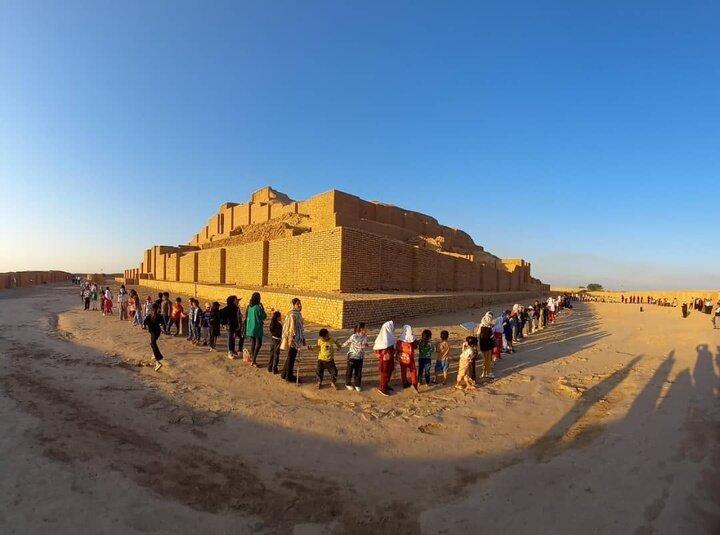Tchogha Zanbil celebrates 43rd anniversary of UNESCO designation

TEHRAN – On Friday, Tchogha Zanbil, a prehistoric ziggurat in southwest Iran, hosted a ceremony to mark the 43rd anniversary of its inscription on the UNESCO World Heritage list.
Atefeh Rashnoei, the director of the World Heritage, said they invited some children from the neighboring communities as special guests at the event, CHTN reported.
“Seeking to raise awareness and empower the local community and familiarize children with the outstanding values of this World Heritage site, children aged 6 to 10 years, were invited to the event as special guests.”
In this gathering, in order to strengthen the sense of national solidarity in preserving and commemorating this treasured monument, children formed a human chain around the temple, Rashnoei said.
A chief tourist destination in Khuzestan province, the magnificent ruins of Tchogha Zanbil is considered by many the finest surviving example of Elamite architecture in the globe. It was made a UNESCO site in 1979.
Construction of the ziggurat started in c. 1250 BC upon the order of the Elamite king Untash-Napirisha (1275-1240 BC) as the religious center of Elam dedicated to the Elamite divinities Inshushinak and Napirisha.
The ziggurat overlooks the ancient city of Susa (near modern Shush) in Khuzestan Province. Reaching a total height of some 25m, the ziggurat was used to be surmounted by a temple and estimated to hit 52m during its heyday.
UNESCO says that Tchogha Zanbil is the largest ziggurat outside of Mesopotamia and the best preserved of this type of stepped pyramidal monument.
Tchogha Zanbil was excavated in six seasons between 1951 and 1961 by Roman Ghirshman, a Russian-born French archeologist who specialized in ancient Iran. It bears testimony to the unique expression of the culture, beliefs, rituals, and traditions of one of the oldest indigenous communities of Iran.
AFM
Leave a Comment